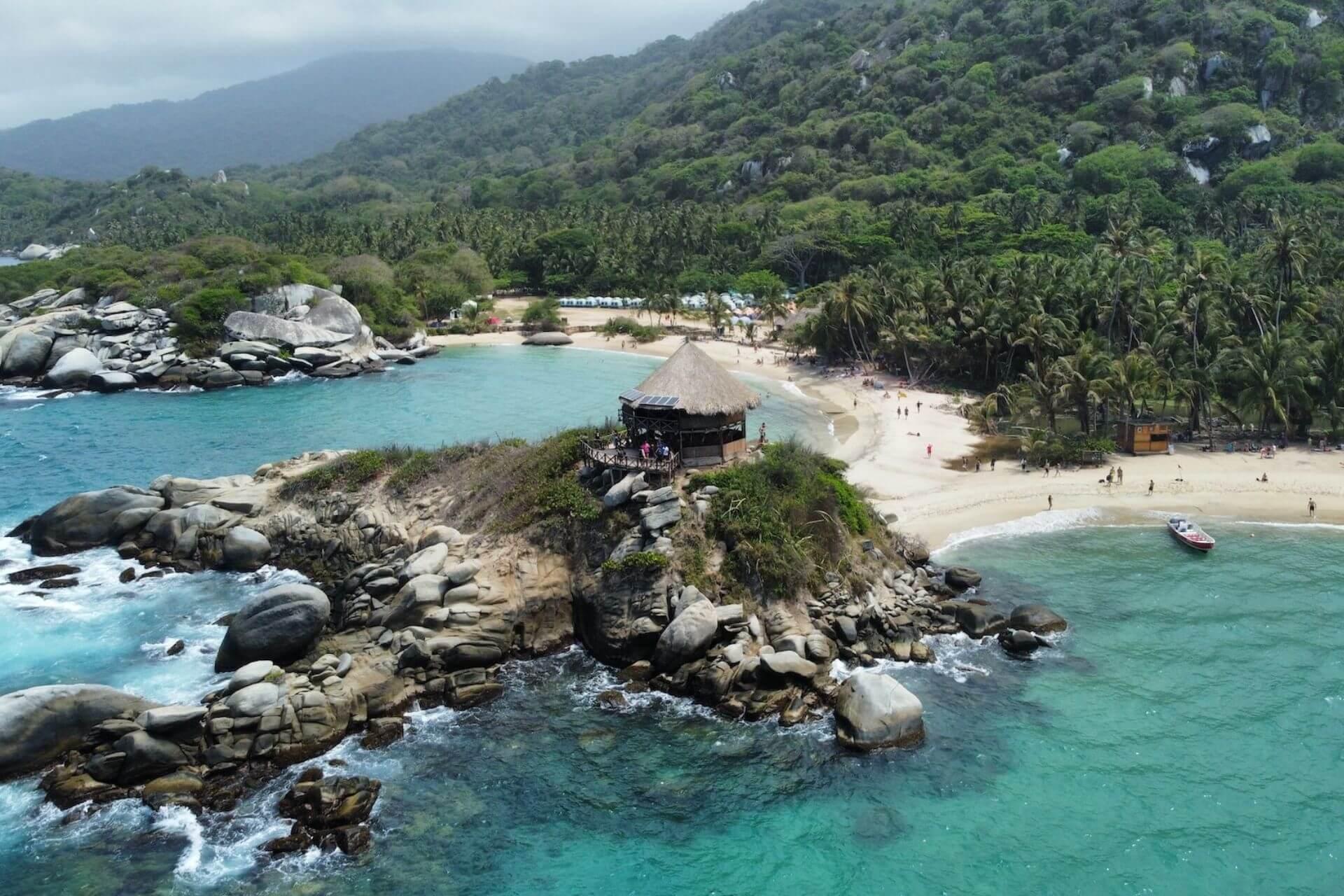White sandy beaches bordered by boulders of various shapes, green jungle with the remains of old Indian dwellings and sweet ripe coconuts lying all around. In our minds, Colombia's Tayrona is synonymous with the perfect beach paradise. Its popularity among tourists and locals alike is steadily growing, which is why you need to know very well where to head to come away with a sense of pure nature and secluded sunsets.
Tayrona National Park
Tayrona National Park can be found in the north of the country near the town of Santa Marta. It is made up of 150 square kilometers of beautiful green jungle and dozens of square kilometers of mesmerizing blue waters of the Caribbean Sea. Remember however, that there is a rainy season from May to June and September to November and you won't enjoy your visit as much during these times. You can take an easy boat or car trip to the western part from Santa Marta or Tananga, but these beaches are often crowded and not exceptional. If you're short on time, visit the more remote Playa Gairaca or Playa Cristal, which offer tranquility, white sand and clear waters. But the real beach gems are to be found in the eastern part of the park.
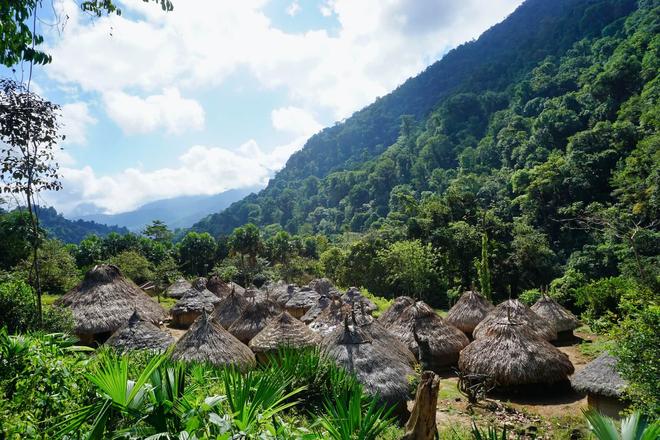
El Zaino – Cañaveral: the classic Tayrona route
There are two entrances to the most beautiful eastern part of Tayrona, both on the same route from Santa Marta to Palomino (road 90) and both require an entrance fee. Most tourists and locals choose to access through the main entrance at El Zaino. From here, a relatively uninteresting four-kilometre asphalt road to Cañaveral awaits, sheltered from the sun by dense vegetation and with virtually no elevation gain. You can walk it, or pay for transport on a small shuttle bus.
The advantage of the walking option is the possibility to make a detour after 45 minutes of walking to Castilettes beach, where you will find a pleasant campsite of the same name and a beautiful view of the coast. Along with two other beaches you'll pass along the way, Castilettes is one of the most dangerous in the park due to its treacherous currents. The dangerous beaches are easily identified by the red flag fluttering on a pole.
From Cañaveral, you'll have to rely on your own two feet. The road sometimes winds a few dozen metres above the sea and offers several opportunities to rest with a view. At other times, you'll walk directly along wooden walkways that wind through the beach. Aside from a few vendors selling homemade coconut popsicles, you'll run into lodging and resupply opportunities as far away as Arrecifes Beach, the last of the beaches with treacherous currents. La Piscina and Cabo San Juan de Guia are the most popular beaches in the park.
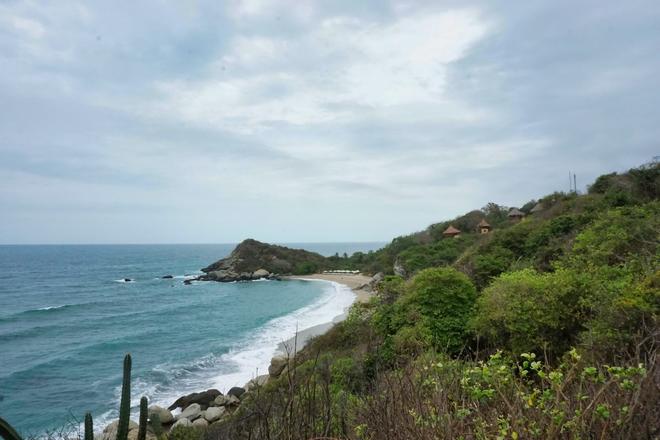
And did you know that just 45 kilometres from the Caribbean is the highest peak in Colombia – Pico Cristobal Colón (5700 metres above sea level), glaciated and virtually inaccessible due to the presence of Indians and drug trackers.
The Tayrona National Park used to be a very dangerous area under the control of criminal organisations, which still operate there. However, the drug industry has been replaced by tourism, so it is safe for tourists, but not so much for local entrepreneurs.
Just 100 kilometres east of the beautifully green Tayrona National Park begins the desert and La Guajira Peninsula – the northernmost point of South America inhabited by the Wayúu Indians. To the west of Tayrona you'll find endless banana plantations. Colombia is the 3rd largest exporter of bananas in the world.
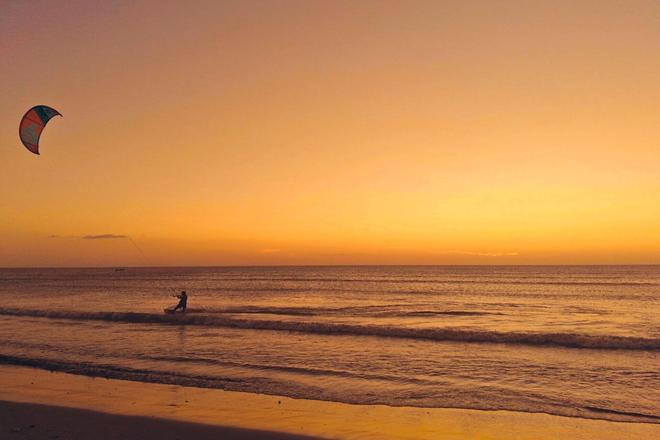
La Piscina and Cabo San Juan: Tayron's beach gems
Cabo San Juan is considered as one of the most beautiful places in Colombia, which is why many visitors choose it as their main destination. In December and January, you'll encounter more people here, but if you avoid the weekend and Colombian public holidays, you'll definitely enjoy the beach. Warmed white sand and the ubiquitous fairy-tale shaped boulders are washed by tiny ripples of clear blue water, with shade provided by palm trees leaning over the beach. On a tiny green peninsula you will find a shelter made of natural materials offering a soothing view of the horizon. You can sleep in a hammock to the sounds of the sea and the jungle, and have breakfast in the morning at the snack bar just off the water. Cabo San Juan can also be reached by boat from the aforementioned Taganga. The boat leaves for the sometimes quite rough seas every morning and returns in the early afternoon. But it would be a shame not to sleep in the park and take any jungle walks.
La Piscina beach is not as picturesque, but it is more spacious and emptier. It looks like a beautiful natural pool bordered on both sides from the open sea by large boulders. You won't find any accommodation or restaurants here, so it feels very wild and authentic. Access to the water is easy and quick, there are no unpredictable currents, and that is also why it is suitable for snorkelling. It is about a 30-minute walk eastwards from Cabo San Juan.
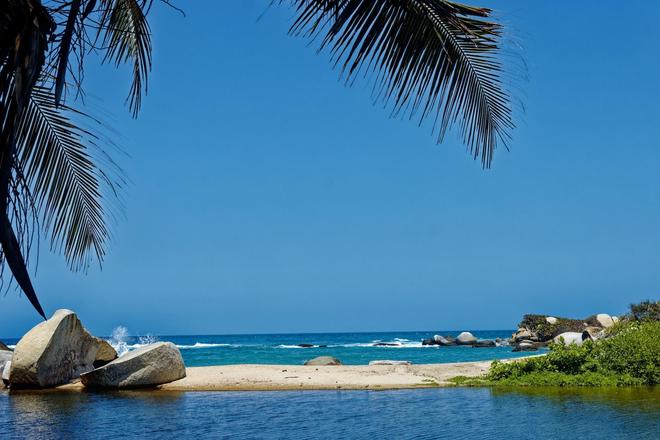
In the hills of the Sierra Nevada de Santa Marta you will find the La Candelarias coffee farm overlooking the colonial town of Santa Maria. Although Colombian coffee is renowned, farm owner Eugenio says Colombians do not drink much quality coffee and their favourite tinto doesn't really have much to do with good coffee.
On the Cabo San Juan experience trek from Calabazo
You can also access the two aforementioned beaches via a second, less frequented entrance in the village of Calabazo. After a few hundred meters from the small entrance building, you'll reach a pleasant jungle path, where you'll most likely be alone or with only a few other like-minded travelers. The path from here to Cabo San Juan beach is a bit more challenging and involves a climb up to 450m above sea level, which can be a bit of a struggle in the sultry jungle environment. It is just over eight kilometres long and takes over three hours to walk due to the difficult terrain. However, you will be rewarded with a minimum of people and an adventurous journey, which includes passages full of climbing over rocks with the help of ropes or crawling over roots and boulders.
Playa Brava: the beach at the end of the world
By far the most deserted is the deeply hidden Playa Brava, which can be visited if you decide to spend at least three nights in the park and make the multi-day crossing El Zaino – Cabo San Juan – Pueblito – Playa Brava – Calabazo.
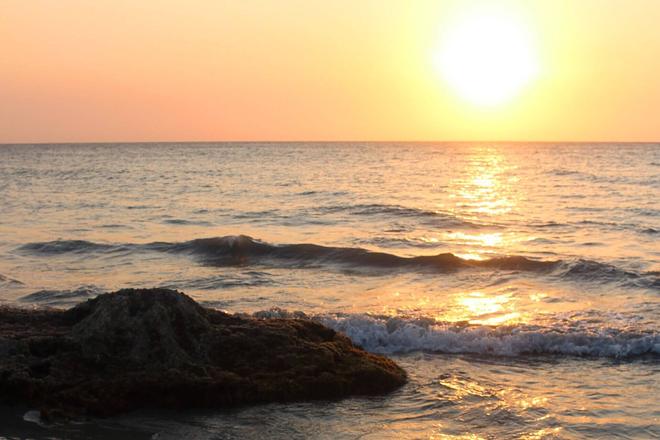
The relatively difficult accessibility of the beach, surrounded on all sides by jungle, makes Playa Brava a forgotten part of Tayrona. The sand a few metres from the sea turns into a pleasant lawn full of coconut palms providing much needed shade. Among the palm trees are a few bamboo houses like something out of a Robinson Crusoe book. The bungalows can be found online under the name Playa Brava Teyumakke and can be booked in advance. As well as wandering the beach, you can order dinner from the bungalow owners and be directed by them on a one-hour or so jungle walk to a nameless waterfall for a perfect swim. A typical meal along the Caribbean coast is fried fish, and order the ubiquitous coconut rice to go with it.
Tips on what else to see in Colombia:
Ciudad Perdida (Lost City) – one of the largest pre-Columbian cities found in South America. You can only get here with an organised tour and the whole trip takes 4 – 5 days.
Cartagena – a fabulously romantic city dating back to 1533, where you can wander the cobbled streets, relax in the shade of bougainvillea and sample Colombian delicacies.
Sierra Nevada de Santa Marta – about an hour's walk from the village of Minca, you'll find the beautiful coffee farm La Candelaria. The village itself isn't really worth a visit, but this secluded farm has an incredible atmosphere and offers accommodation too.
Bogotá – the capital, will take your breath away. You can't miss the Museo del Oro (Museum of Gold) and the absolutely breathtaking views of the city from Cerro de Monserrate (3200m above sea level).
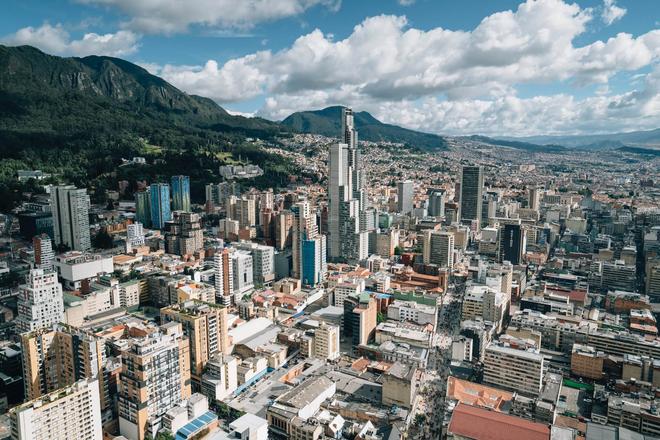
Salento – an idyllic mountain town. Nearby you will find the Valle del Cocora with a unique species of palm trees growing up to 60 metres.
Barranquilla – a quaint town where you won't meet any tourists, just lively locals and the home football stadium of the Colombian team, where the local fans can produce a literally electrifying atmosphere. A great museum of the Caribbean.
Amazonia – real adventurers can head to the borders with Brazil and Ecuador. One possible starting point is Leticia.
Pueblito: a village hidden in the jungle
Tayrona National Park is very hilly, with some ridges rising up to 900 metres above sea level. In warm and muggy weather, the hundreds of metres climbed can be really challenging. If you want to do a multi-day hike including a visit to Playa Brava, you can't avoid travelling around in the jungle.
Halfway between Playa Brava and Cabo San Juan, the well-preserved ruins of the village of Pueblito lie in the highest parts of the park. The remnants of stone foundations, the circular outline of the houses and the ochre stairs date back to the pre-Columbian period. The original inhabitants of the area were the Tayron people, who gave their name to the whole area. It is their descendants who can be found today in the few restored stone houses. They are dressed in traditional white tunics and often carry a small machete at their waist. Only a few of them live here now, and mainly because of the tourists who guarantee them a certain income. This doesn't mean that the place is commercial, on the contrary, it is unexpectedly authentic. Although the village seems far from civilisation, the locals, used to moving around in the jungle, can be in Calabazu in an hour, where they also often head for work and to resupply.
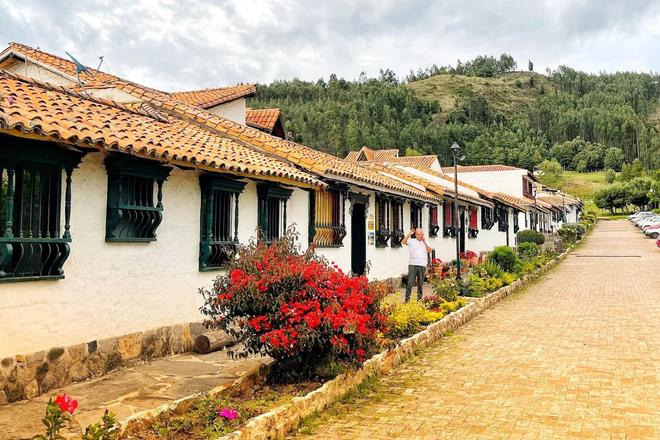
The atmospheric Pueblito is just over an hour's walk from the popular Cabo San Juan beach, but there are few visitors. The hike to the lost village itself is one of the best parts of the entire route, involving challenging sections of rock climbing, skirting around huge trees that you can't even see into the canopy, and at times the route also offers views of the distant sea.
You won't discover the wildest part of the jungle until closer to Playa Brava. The swaying branches overhead draw attention to the swift movements of monkeys, hummingbirds may show themselves to attentive wanderers, and a little less wanted is certainly the roar of the ocelots, pumas or jaguars that also inhabit the park.
Expect more moderate accommodation
Despite its popularity, Tayrona still resists huge luxury accommodations and offers a more Robinson Crusoe-style overnight stay. At most places, it's possible to sleep in a tent or in the numerous hammocks suspended under large shelters. In a few places you can also stay in simple but stylish cabins (Playa Brava, Arrecife or Cañaveral).
If you prefer more comfortable accommodation, there are several options at the park entrances. Two locations in El Zaino have a special atmosphere, the Villa Yira Eco-hotel and the Quetzal Dorado Eco-lodge. The common denominator of both places is the sensitive treatment corresponding to the surrounding jungle, whose sounds you can listen to at night. But don't be fooled – a night in a tent or hammock may lack comfort, but it's still a greater experience.
So pack a strong repellent, some good sunscreen, sturdy boots for getting around, and set off on your own adventure that will make you feel like Mowgli at times and Robinson at others.
